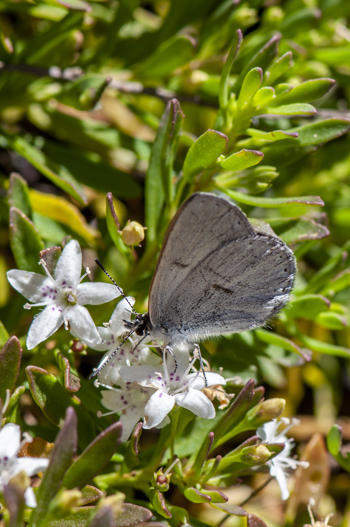Golden-rayed Blue Butterfly
This Endangered butterfly is only found in the Wimmera.
The Golden-rayed blue butterfly lives in the narrow bands of remnant floodplains that border a handful of salt-lakes in Victoria's west. It relies on only one species of plant Myoporum parvifolium, known commonly as Creeping Boobialla.

Major threats
Degraded habitat is the biggest threat to the survival of the Golden-rayed Blue butterfly. Over time it has lost its marginal habitat around the salt-lakes, mainly through cropping and grazing.
Canopy encroachment is another problem as it displaces the butterfly’s food plant. It restricts the foodplants' growth as well as reducing the sunny, open areas preferred by the adult butterfly.
The plan for fighting extinction
Zoos Victoria has partnered with Dalki Garringa Native Nursery to propagate thousands of Creeping Boobialla cuttings. With help from school groups, local catchment management authorities, and volunteer groups, more than 5,000 plants have now been distributed throughout the region to support existing butterfly populations.
Zoos Victoria is continuing to conduct field surveys to better understand the distribution and threats to the Golden-rayed Blue butterfly.
How you can help
- Do what you can to create community awareness and support for the Golden-rayed Blue butterfly.
- Visiting our zoos supports our fighting extinction work.
- Donate if you can. As a not-for-profit organisation all donations go towards our important conservation efforts.
- Discover more about local conservation events and join the growing number of activists taking action for local wildlife.
Is your classroom learning about the Golden-rayed Blue Butterfly?
Browse through our collection of animal teaching and learning resources for students. These include animal toolkits, e-books, Ask a Zoo Expert resources, video showcases and real-world examples to support the VCE Study Design.
